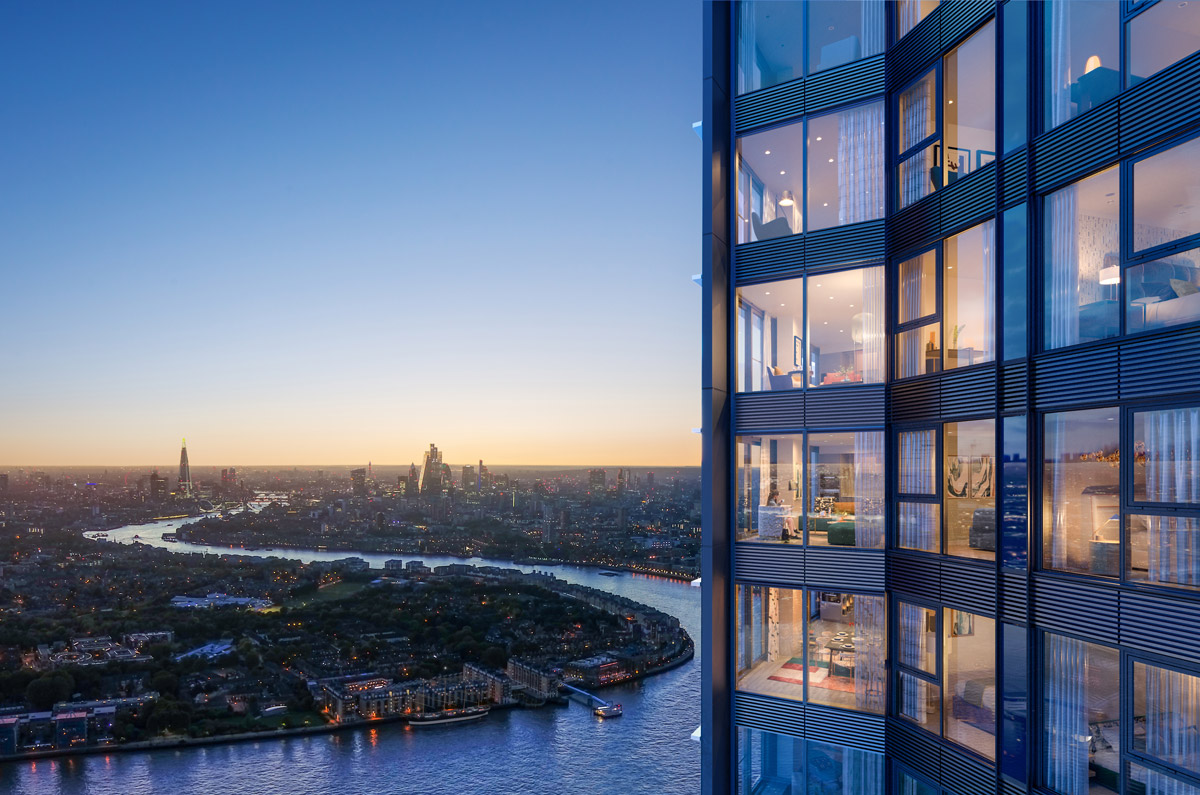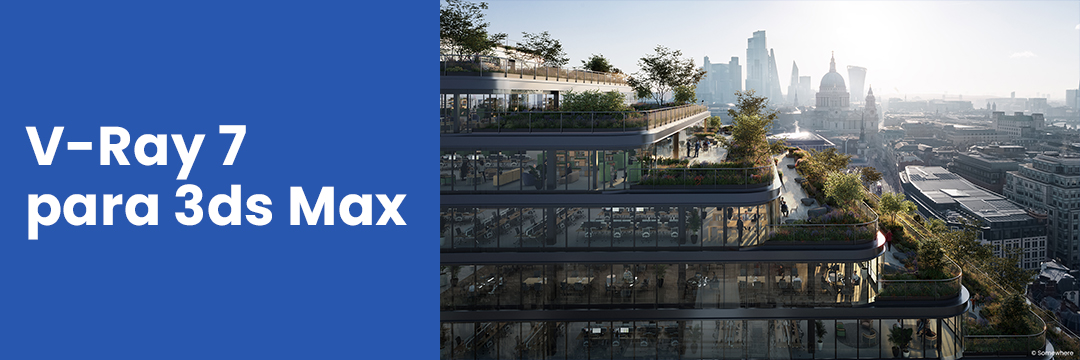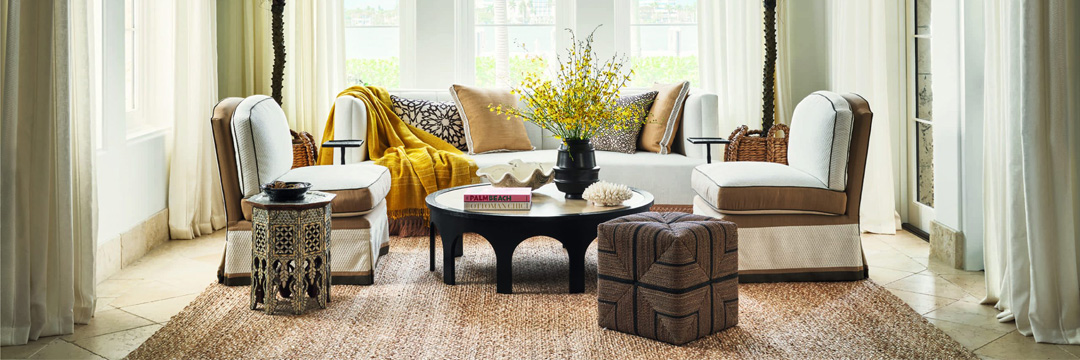
We are back with the section where we get to know some of the most powerful studios in the world. In this new interview, we will talk to two members of the British architectural visualization studio Somewhere, Lautaro Vogel (Studio Lead and Art Director) and Gino Giampaolo (Art Director).
Somewhere (within the Uniform Group) is undoubtedly one of the benchmark studios internationally, covering large-scale projects and boasting a strong corporate culture. Join us to get to know them!
1. Can you tell us how your career in the Archviz field began and how you got to Somewhere?
GG: My career at Archviz began in 1994 when I created my first “eye level” sketch of a country house characterized by having a single window on the front facade. From then on I developed my skills as a draftsman, which led me to decide to study architecture in the city of Caracas, in 2006. After finishing my degree, I worked as an architect for several years, always with a clear inclination towards the visualization of objects. projects and trying to avoid Autocad and Revit as much as possible. By 2016, I would have already oriented my career to archviz.
My knowledge of 3D tools was a product of my self-taught approach to the subject, and it was in that search for the knowledge that would increase the value of my work that I came across the online channel of Adán Martín,who was fundamental as a mentor to expand and master not only 3D tools, but also the fundamentals behind the behavior of lighting and materials. In 2019 I learned that that year Adan Martín, together with Carla Jovine and Eduardo Rodriguez, would open a school dedicated to the training of Archviz artists. With the ambition of joining highly competitive studies, I decided to enroll and upon finishing the Master’s degree I obtained my first offer in Europe with the Kilograph team, with whom I worked as a Junior artist. After that experience I decided to settle in Liverpool where the studio at that time called Uniform would have made me an offer to join their team. It is there where to this day I still belong and where I have seen my career grow from Junior Artist to Artistic Director, thanks to a combination of foundations, experience, effort, initiative, willingness and support from the entire team.
LV: Perhaps, like most people in this industry, my path began through my studies in Architecture. I studied Architecture and Urban Planning in my native country, Argentina (long live free quality public education!). It was during those years that my interest focused on the field of architectural visualization. A few months after completing my degree and after having done some freelance work, I received a job offer from ZOA, a leading architectural visualization team with an exceptional group of people in Budapest, Hungary.
After some time there and with the desire to explore new techniques and work approaches, I decided to move to Madrid, where I had the valuable opportunity to collaborate and learn from the talented, globally recognized Beauty and the Bit team.
Finally, I received an offer from Uniform to join their team in Liverpool, UK. This opportunity intrigued me a lot, as I was eager to learn how multidisciplinary teams like Uniform work.
2. Let’s talk about Somewhere, a company that is part of Uniform Group with 25 years of global experience. How did this new branch come about and how has your approach at Archviz evolved over the years?
LV: Since its inception, Uniform has always had a broad vision when it comes to services, clients and sectors. However, there were always two main offerings: brand consulting and architectural visualization.
Over time, both teams grew and worked with increasingly prominent clients from different markets. And the Architectural Visualization offering expanded into broader services for the real estate sector. There came a point where having a single brand identity, website, positioning, etc., stopped working. It was confusing for both potential clients and artists looking to join the team or teams.
In 2021, we restructured the Company and today Uniform Group™ is the parent company, creating space for a family of creative agencies that can work both collaboratively and autonomously. Somewhere™ and Continuous™ are two agencies within this family, which are likely to be joined by new, equally creative and innovative members in the future.
3. What type of projects do you usually cover and what is your creative workflow like?
GG: I’ve worked for Somewhere for just over 3 years. In that time I have seen the team take on projects of all types, scales and creative approaches. This is something that I really like as it allows us to maintain the dynamism and variety necessary to learn new practices and more importantly, avoid boredom, the enemy of creativity.
In percentile terms, I think it would be fair to assume a good percentage of the projects we work on are exterior in nature and to a lesser extent interior projects. Due to the multidisciplinary nature and experience that Somewhere has gained during its history in the industry, we have the ability to take on competition and real estate projects, master plans and multi-family residences, still images and films, all in varied styles. That is why our workflow and range of technical and artistic skills is also very varied, depending on the characteristics and requirements of the client. From images based on a purely mattepainting approach to projects developed entirely within 3D tools, one of the team’s initial tasks is to define the workflow that best fits the established qualities and ambitions.
Due to the variety in the nature of our projects, we rely on documenting and sharing our best practices, which are under constant internal review due to rapid advances in the technologies we use. When new artists joins the team, they have the time and support necessary to learn about our creative workflow, practices and regulations to keep the organization, communication and efficiency adjusted to a team that is subject to constant collaboration and information exchange.
I remember that when I joined the studio, one of the pleasant surprises I got was the documentation and availability of information about these practices, which ensured that my integration into the team and workflow was very fluid and stress-free.
4. What project has represented a special challenge for your team and how have you faced it?
LV: The truth is that each project has its particularities. Many of the projects that come to mind are under confidentiality agreements, so I can’t talk about them or show them publicly.
One project I can mention, perhaps a little more unconventional and which presented significant challenges from a technological point of view, is “Configurator” for our friends at Urban Splash a few years back.
This project arose in response to the need of Urban Splash, which is dedicated to the design and construction of prefabricated modular homes with millimeter precision and incredible manufacturing and installation times, to adapt to a market in which buyers make more and more interactions and online purchases.
Our team proposed to create a configuration and sales tool as innovative as the product and service itself. Buyers could choose how much space they wanted, how they wanted to live (open plan or subdivided spaces) and what internal and external finishes they preferred, all from the comfort of their homes.
To achieve this, we used real-time 3D technology through pixel streaming, which at that time was still in its early stages of development and presented many challenges and limitations. Thanks to our investment in research and development (R&D), we already had a solid enough foundation to carry out this ambitious project. In addition, we were able to take advantage of the multidisciplinary nature of our team, collaborating with programmers, web and user interface designers, CG artists, among others.
5. What are your personal references and how do you implement them in your projects?
GG: Throughout my path in the industry I have learned and found inspiration everywhere. The practice of using references is part of human nature. Our ability to observe and replicate pre-existing behaviors has been key to our survival as a species. It is also a fundamental basis in the initial stage of learning techniques and understanding the behavior of natural phenomena that we must replicate in a virtual environment. Hence, the use of references is a crucial practice on a personal level and as a team, which makes my work in production and artistic direction much easier and more effective. My first references purely drawn from the Archviz industry came to me during the Master’s degree in School-ing. Adán Martín and Eduardo Rodriguez invested a section of the program in showing us the work of other studios and photographers, whom they considered great references for the study of composition, lighting and narrative. Within this list I remember names of photographers of the stature of Ezra Stoller and Julius Shulman, and also archviz studios such as Beauty & The Bit, Dbox, Mir, Uniform among many others.
Personally, I love the work of Simon Stalenhag which I discovered in the bookstore that was available to Master’s students.
Once I joined the Somewhere team, my reference library expanded immensely due to the personal learning program, called PLAY, in which the study allowed me to pursue my interest in experimenting and creating projects of a personal nature by blocking time within work hours. and placing different courses at my disposal. One of them was Matte Painting taught by Anthony Eftekhari, whose work and workflow quickly became a reference. It would also be fair to mention Iwan Baan’s photo essays, which I explored with great interest while conducting my own photo essay as part of the program.
As I have mentioned, the search and documentation of references is very important for me and for each artist on the team, which is why within the studio we make frequent use of PureRef and Kive, which we can access and extract the precious nectar of the inspiration and reaffirmation.
Speaking of inspiration, every Monday we meet as a team first thing in the morning to share any source of inspiration that may be of interest and that may become another reference within our mental and digital library. On Thursday afternoons we also have a space called Snapshot dedicated to sharing new knowledge, techniques, challenges or references that we have found during the week.
Personally, many of my references also come from the film industry, which is why we frequently organize film nights to extract potential references.
6. Within your time at the company, how have you seen your role and responsibilities evolve, and what key learnings have you gained from this evolution?
LV: In my case, my journey began as a mid-level CG Artist in 2019. After six months, I was promoted to the position of Senior CG Artist. This promotion brought with it higher expectations in terms of quality and efficiency in the work I produced, as well as a greater burden of responsibility on the projects. I also took on the responsibility of assisting other less experienced team members when necessary and provided support to the Project Managers in project planning.
In 2020, thanks in part to my constant initiative to propose ideas and improvements for our team and ways of working, I was promoted to the position of Studio Lead, a role that to this day I combine with that of Art Director, together with Gino.
This transition from roles focused purely on CG production to more strategic and leadership roles in multiple simultaneous projects has allowed me to better understand how to balance the business side with my technical and artistic knowledge to obtain maximum benefit. I have also learned a lot about dealing with clients and making long-term decisions in relation to the business, infrastructure, team culture, among other aspects.
GG: I received an offer from Somewhere to join their team as a Junior artist in September 2020. By January 2022 I would have gone through the roles of Middleweight, Senior and finally Art Director, a position that I currently hold within the team. The main challenge of my role is maintaining a balance between management and production, which easily consume my productive hours. That is why we have focused my learning on maintaining clear, concise and efficient communication when it comes to giving feedback within the project team, especially in English, since it is not my native language and I can end up as a good Latin American talking a mile a minute. During production, my approach focuses on the 80/20 rule, identifying those elements and tasks that require 20% of the defined time, but whose impact positively affects 80% of the visual and communicative quality of the image.
7. About Somewhere’s company culture, how is the team’s sense of belonging fostered and what do you do as a company to promote important aspects such as diversity, inclusivity and collaboration?
GG: Perhaps these are the fundamental aspects of the individual and collective well-being of any team. Personally, the reason why I decide to work in a team and not go down the lone ranger route as a freelancer is the feeling of belonging, the diversity and precisely the collaborative nature of the studio, in no other way would I be able to learn so much day by day while having fun in the process.
While we encourage everyone to go to the studio, we still enjoy the benefits of hybrid work and the choice of deciding which days to work from home. Some of us even work completely remotely from geographies of preference. To keep the sense of belonging intact, a delegation called “Culture Team” organizes team building activities regularly, an opportunity for remote and in-person artists to strengthen ties and stay connected and collaborative.
Another peculiarity of the team is the valuable diversity to which we are exposed, working with artists from all cultural backgrounds you could imagine. The importance of a collective identity characterized by equality lies in the valuable unique perspective that each of us brings and opens our minds to new possibilities that otherwise remain hidden from us.
Somewhere also promotes these values by maintaining discussion and dissemination channels to raise awareness within and outside the industry. An example of this in this article celebrating International Women’s Day
8. How do you ensure effective interdisciplinary collaboration in your projects, and what impact does this have on the final results?
LV: In simple or smaller projects, interdisciplinarity is not always so evident, but in those that require a comprehensive creative vision through various media and technologies, it makes a big difference. Being surrounded by talented individuals, each with unique skills and knowledge in different areas, makes the project much more enriching and complete. In addition, the range of possibilities is greatly expanded and the generation of ideas is encouraged.
A notable example of this is the Greenwich Peninsula project, which, although it is a few years old, perfectly illustrates the collaboration between creatives, illustrators, video editors, programmers, designers, CG Artists and other professionals.
9. In relation to emerging technologies, how do you incorporate them into your work and what do you think their impact will be on the Archviz industry?
GG: It’s an interesting question. Coincidentally, while we are conducting this interview, all of our equipment is being updated with the latest versions of the software that we use on a daily basis. An important part of Somewhere’s resources is dedicated to keeping artists updated not only at the software and hardware level, but also in processes and workflows. Collaboration and efficiency are key factors to add value to our service, therefore, people who are passionate about solving technical problems, (blue screens or any other color!), and who are not dedicated to production are as valuable as those in production.
10. What is Somewhere’s long-term vision for the Archviz industry and how do they plan to adapt and continue to lead in an ever-evolving environment?
LV: I think in the 25 years of Uniform/Somewhere’s existence, the only constant has been change! Therefore, it is something we are well prepared and accustomed to.
Looking at the future of the industry, we anticipate a more competitive and complex environment for our real estate clients in the coming years. We believe that providing them with a single agency that can serve most of their creative needs will be beneficial to them.
From our point of view, in creative and multidisciplinary agencies like ours, the way forward involves maximizing our ability to tackle larger projects with a global vision. This includes ensuring a consistent message across multiple channels and platforms, covering elements such as branding, tone of voice, visual identity and user experience, among others. Additionally, our extensive experience and ability to produce the majority of required content, products and services gives us a competitive advantage.
Personally, I believe that advances in artificial intelligence have a significant impact on our industry, both today and in the future. However, I do not consider them completely negative or cause for fear. These advances present both threats and opportunities, and it is up to each professional or studio to identify those that are relevant to their specific situation and market.
One emerging trend that I imagine could happen is a shift in demand away from static images and videos (areas where AI will likely excel and become more accessible to competitors and customers) toward real-time interactive experiences, virtual reality, and other solutions. more complex ones that require a comprehensive creative approach, as I mentioned above.
I hope you enjoyed this interview, if you are interested in learning more about Somewhere’s work, you can visit the following links:
Website
Instragram
Join the team: wearesomewhere.net/careers
Contact: jobs@wearesomewhere.net
Latest Newsletter











